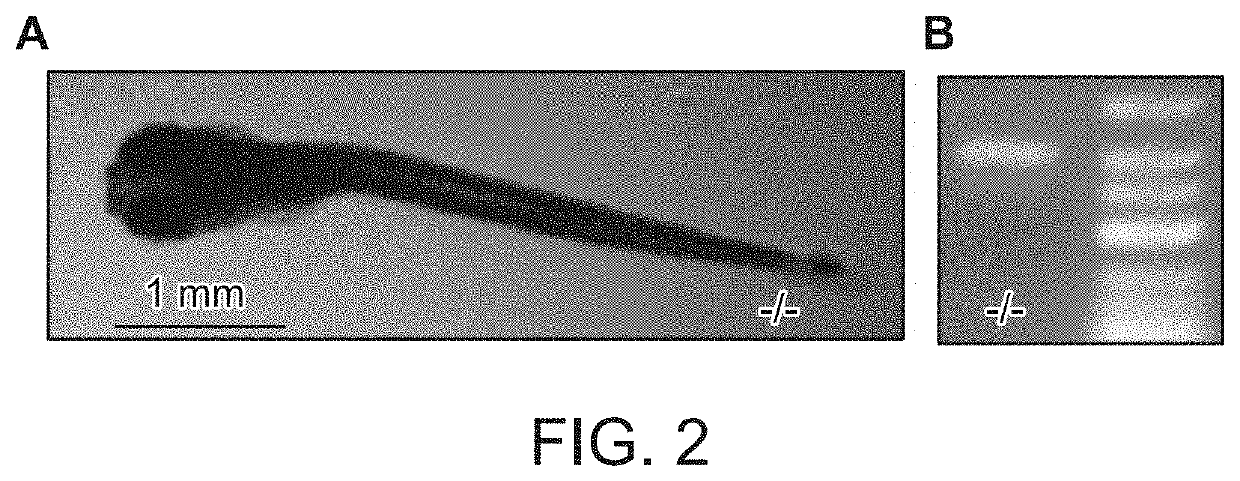Combination treatment of specific forms of epilepsy
a combination treatment and specific form technology, applied in the field of formulations and methods for the prevention of seizures, can solve the problems of poor development of language and motor skills, patients are at risk of numerous associated conditions including orthopedic developmental problems, and children with dravet syndrome are likely to experience multiple seizures per day, so as to reduce seizures and associated developmental decline, reduce side effects, and reduce seizures
- Summary
- Abstract
- Description
- Claims
- Application Information
AI Technical Summary
Benefits of technology
Problems solved by technology
Method used
Image
Examples
example 1
[0244]Zebrafish embryos (Danio rerio) heterozygous for the scn1Lab mutation (scn1Lab+ / −) were backcrossed with Tupfel longfin wildtype (WT scn1Lab+ / +). Adult zebrafish were housed at 28.0° C., on a 14 / 10 hour light / dark cycle under standard aquaculture conditions. Fertilized eggs were collected via natural spawning. Anaesthetized fish (tricaine 0.02%) were fin-clipped and genotyped by PCR. After genotyping, samples were purified (MinElute PCR Purification Kit) and sequenced by LGC Genomics. Age-matched Tupfel longfin wildtype larvae were used as control group (WT scn1Lab+ / +). These embryos and larvae were kept on a 14 / 10 hour light / dark cycle in embryo medium (Danieaus): 1.5 mM HEPES, pH 7.6, 17.4 mM NaCl, 0.21 mM KCl, 0.12 mM MgSO4, and 0.18 mM Ca(NO3)2 in an incubator at 28.0° C. All zebrafish experiments carried out were approved by the Ethics Committee of the University of Leuven (Ethische Commissie van de KU Leuven, approval number (061 / 2013) and by the Belgian Federal Departme...
example 2
[0264]The drugs lisuride and efavirenz are known 5HT receptor subtype agonists. Efavirenze agonizes both the 5HT-2A and the 5HT-2C receptor subtypes [See, Gatch et al., “The HIV antiretroviral drug efavirenze has LSD-like properties” in Neuropsychopharmacology 38, pp 2373-2384 (2013)]. Lisuride agonizes the 5HT-2A receptor [See Zweckberger et al., “Anticonvulsant effects of the dopamine agonist lisuride maleate after experimental traumatic brain injury” in Neurosci. Lett. 470 pp 150-154 (2010)]; in addition, it antagonizes 5HT-2B receptor activity associated with cardio-toxic effects [See, Hofman et al., “Lisuride, a dopamine receptor agonist with 5-HT2B receptor agonist properties: absence of cardiac valvulopathy adverse drug reaction reports supports the concept of a crucial role for 5-HT2B receptor agonism in cardiac valvular fibrosis” in Clin. Neurpharmacol. 29 pp 80-86 (2006)].
[0265]In order to identify agents with potential efficacy for treating Dravet syndrome, the effects of...
PUM
| Property | Measurement | Unit |
|---|---|---|
| pH | aaaaa | aaaaa |
| pH | aaaaa | aaaaa |
| resistance | aaaaa | aaaaa |
Abstract
Description
Claims
Application Information
 Login to View More
Login to View More - R&D
- Intellectual Property
- Life Sciences
- Materials
- Tech Scout
- Unparalleled Data Quality
- Higher Quality Content
- 60% Fewer Hallucinations
Browse by: Latest US Patents, China's latest patents, Technical Efficacy Thesaurus, Application Domain, Technology Topic, Popular Technical Reports.
© 2025 PatSnap. All rights reserved.Legal|Privacy policy|Modern Slavery Act Transparency Statement|Sitemap|About US| Contact US: help@patsnap.com



